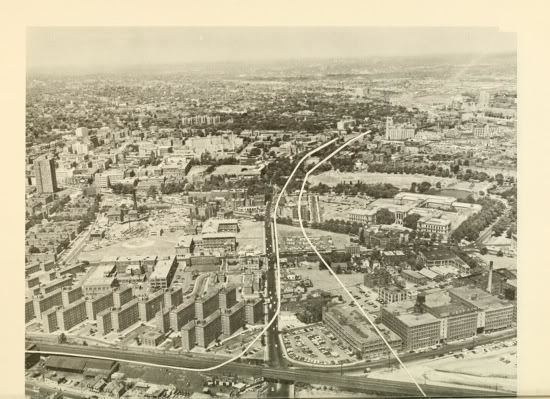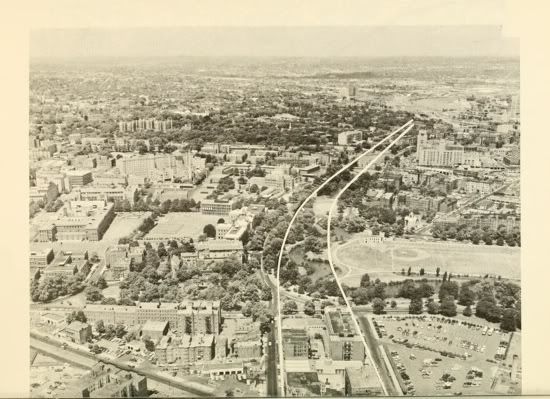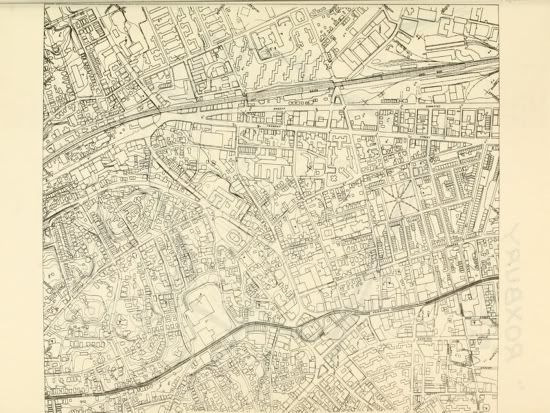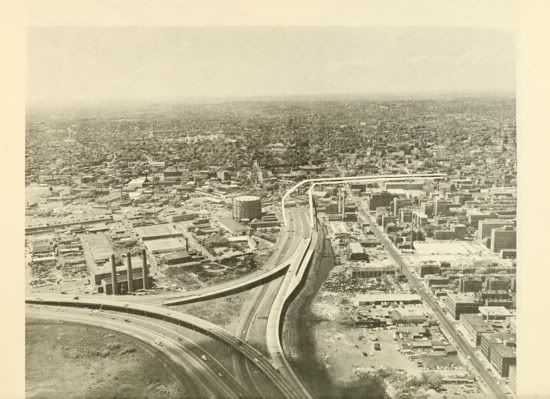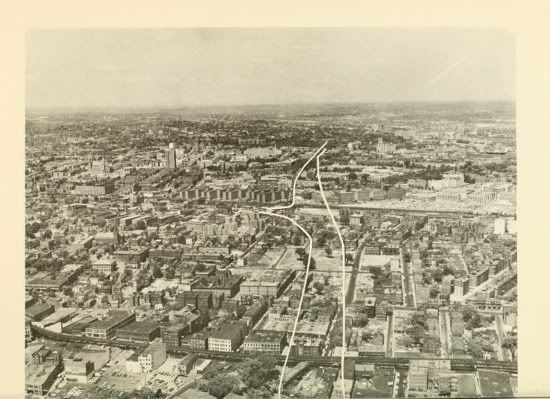I guess I never paid much attention to the talk about I-695 because I thought it was just an idea, not something actually planned. A lot of you are already familiar with it.
After hearing Governor Dukakis mention it the other night, I had to know more.
He talked about how the new highway would branch off the Southeast Expressway where the Albany off-ramp is today, head up (approximately) where Melnea Cass Boulevard is today (although I think originally more to the left/west of where they ended up building it), across the railroad tracks, to the left of the Museum of Fine Arts (within three feet of it, he said, and he was only slightly exaggerating), across the Fens (next to the Gardner Museum), in front of the Landmark Center, across Beacon, across the Mass Turnpike, over the Charles (or under) where the BU Bridge is now, across Memorial Drive, up Brookline Street through Cambridgeport to Central Square, across, up through Inman Square, into Union Square and then meet with I-93.
The idea had its concept in 1948 and was still seen as a viable plan in 1965, when this book was published:
Preliminary relocation survey: Roxbury district of the city of Boston
...a study of the relocation efforts that will be needed when land taking begins for the proposed innerbelt (Southwest Expressway) in Boston's Roxbury and Fenway neighborhoods; includes a socioeconomic study of the area, welfare statistics, public school data, crime statistics, photos of "typical" buildings and discusses the availability of affordable housing; also includes name and occupation of residents that will be affected for Columbuus Avenue, Sterling Street, Vernon Place-Court, Bills Court, Albany, Weston, Carlow, Hunneman, and Newbern Streets, Harrison Avenue, Washington, Ruggles, Tremont and Field Streets, Tavern Road and Shawmut Avenue; owners of the buildings to be taken are also given together with description and use of the structure and it's assessment; aerial photos showing the path of the highway are included; copies of this item were in the BRA collection...
I found it by way of this guy's site:
http://billwarner.posterous.com/bostons-inner-belt-the-highway-that-was-stopp
The plan was far enough along that estimates of how much they would have to pay property owners were figured.
As everyone knows, the project was canceled in 1970-1971.
Here are some renderings from that book showing where the new highway would go.
A map showing the neighborhood prior to construction. That's Madison Park in the middle, and the highway would have gone right over it, according to the other images. This is to the west of where Melnea Cass Blvd is, today.
The path of the highway from the Southeast Expressway up to I-93.
Lower left on this is Annunciation Road and the Greek Orthodox Cathedral at the corners of Parker and Ruggles Streets heading up across Huntington Ave to the left of the MFA at Museum Road, across the Fens past the Gardner Museum.
This part of the Fens actually has a name but I don't remember what the Governor called it. He walks this every day going to work at NeU.
A map of the neighborhood. That's Washington Street at the bottom, Tremont Street at the top - notice the density!
The off-ramp at Albany Street. Notice the Fort Point Channel to the right of the off-ramp. Buried, today!
The off-ramp at Albany Street up toward Melnea Cass Blvd. Notice the round building at the bottom - this is now a hotel. Again, the Channel still exists.
The elevated on Washington Street at the bottom of the photo, right through Madison Park, and northwest.



